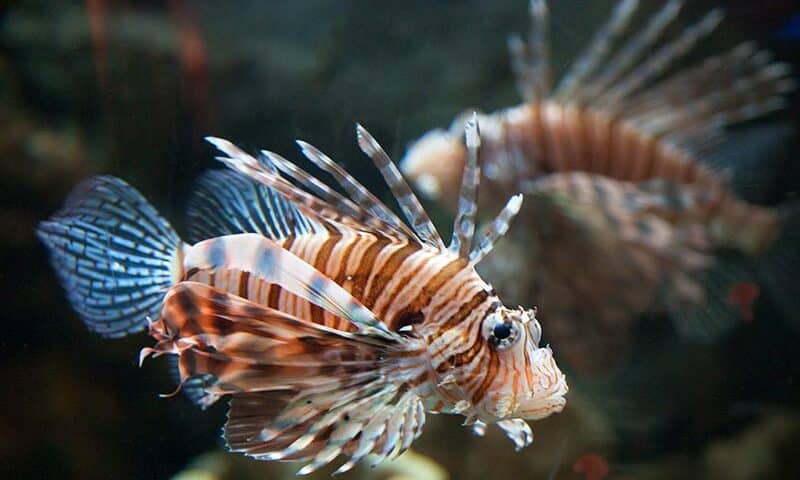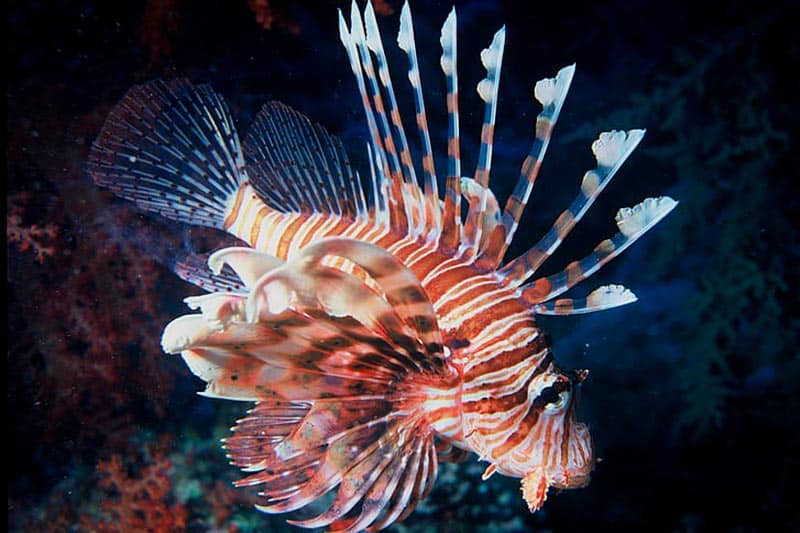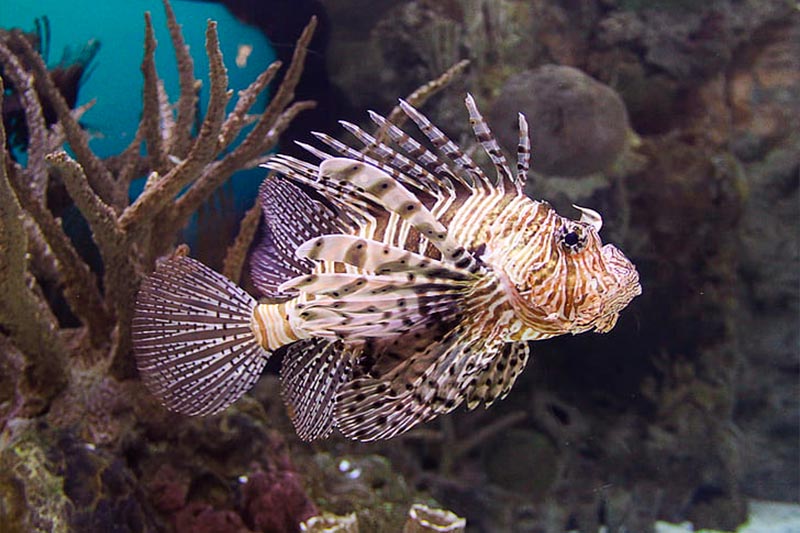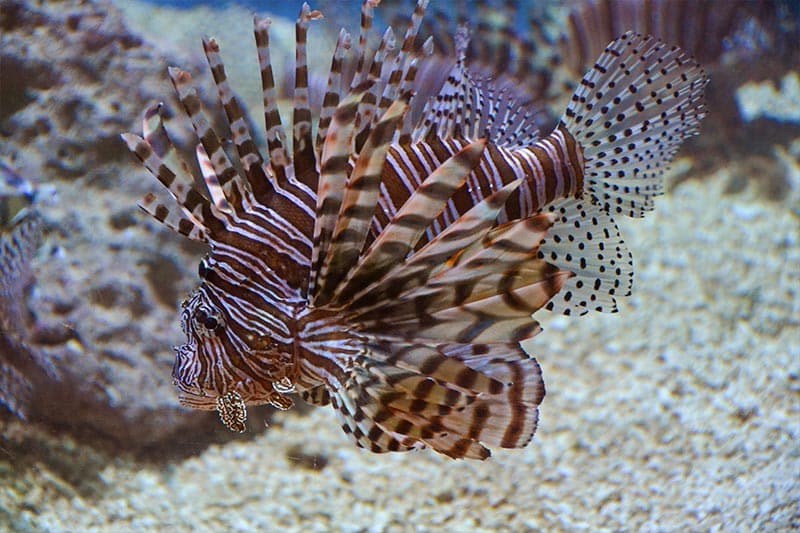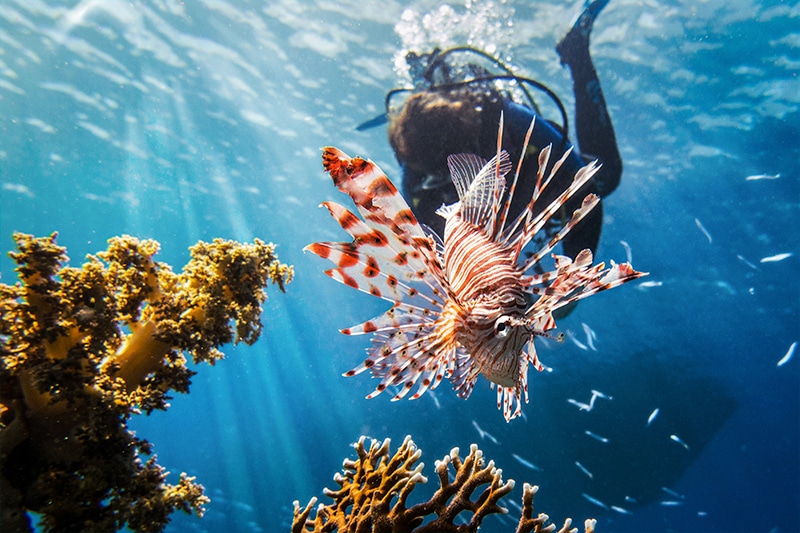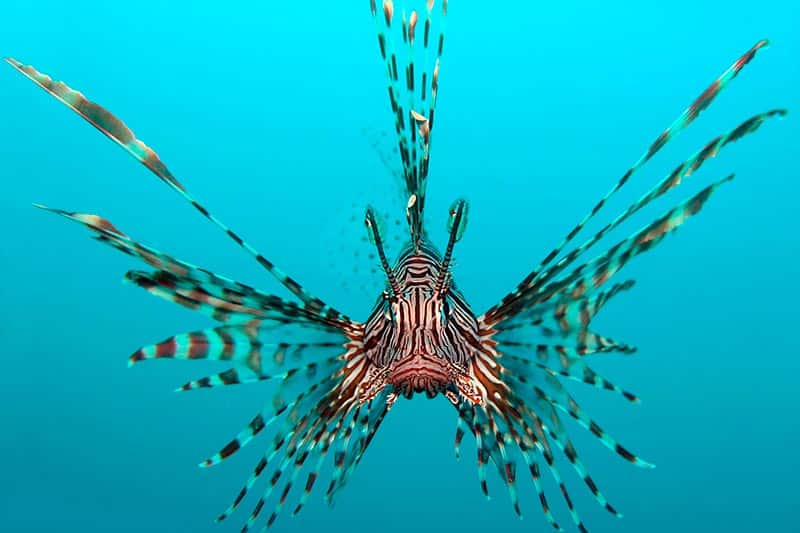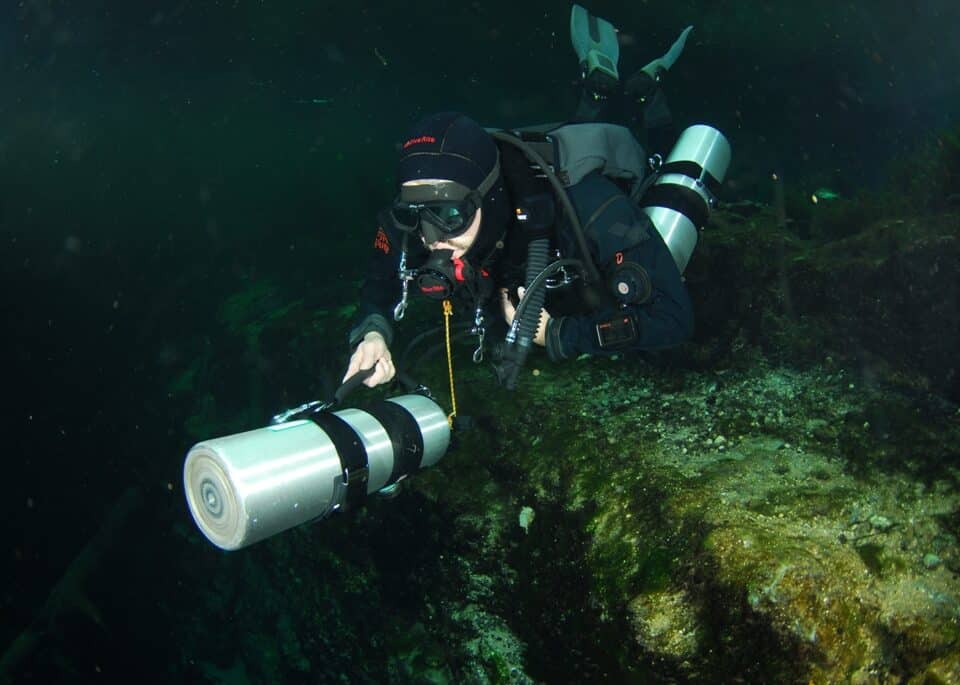1. Detailed Description of The Lionfish Invasive Species
Although there are several species of lionfish in the world’s oceans, two species stand out as the invaders of the Caribbean Sea. All sightings correspond predominantly to the species Pterois volitans and, to a lesser extent, Pterois miles. Pterois volitans is recognized for its pattern of brown and white stripes, while the stripes of Pterois miles are darker and denser. Surprisingly, there’s a remarkable genetic similarity between these two invasive species in the Caribbean.
Which one arrived first in these waters? That remains a mystery yet to be solved by scientists.
Their distinctive pattern of red, brown, and white stripes around their bodies makes them visually appealing, almost like a candy cane to a child’s eyes. Moreover, lionfish can reach a length of up to a foot, around 30 cm. They reach sexual maturity very quickly, in less than a year, and are still not fully grown, although their growth slows down from that point on.
The peculiar reproduction method of lionfish invasive is another noteworthy detail. Females can release up to 2.4 million eggs per year and spawn every two or three days, laying between 2,000 and 15,000 eggs per spawning, which float adrift awaiting fertilization.
These predators are armed with 18 venomous spines used for defense against predators. To a human, a sting can cause swelling for a few days.
The spines are strategically located on the front part of the dorsal fin, two shorter ones on the pelvic fins, and three additional ones on the front edge of the anal fin.
Well-protected against predators, they are highly adaptable. Once they find a suitable environment, they tend to stay, sometimes reaching densities of over 200 adults per acre.
Lionfish meat is delicious and highly prized by restaurants.




